GBP/USD
Analysis:
Since July last year, the main direction of price movement in the GBP/USD pair has been determined by a descending wave algorithm. Its structure is developing as a corrective type, resembling a "pennant." The unfinished section started counting on March 8th. Last week, the price broke through a strong support level, after which the pair's quotes needed to consolidate to continue the downward trend.
Forecast:
In the first half of the upcoming week, the British pound market is expected to continue its sideways movement along the calculated resistance levels. Closer to the weekend, a reversal and a resumption of downward movement can be anticipated. This is highly likely against the backdrop of increased volatility following the release of important economic news blocks.
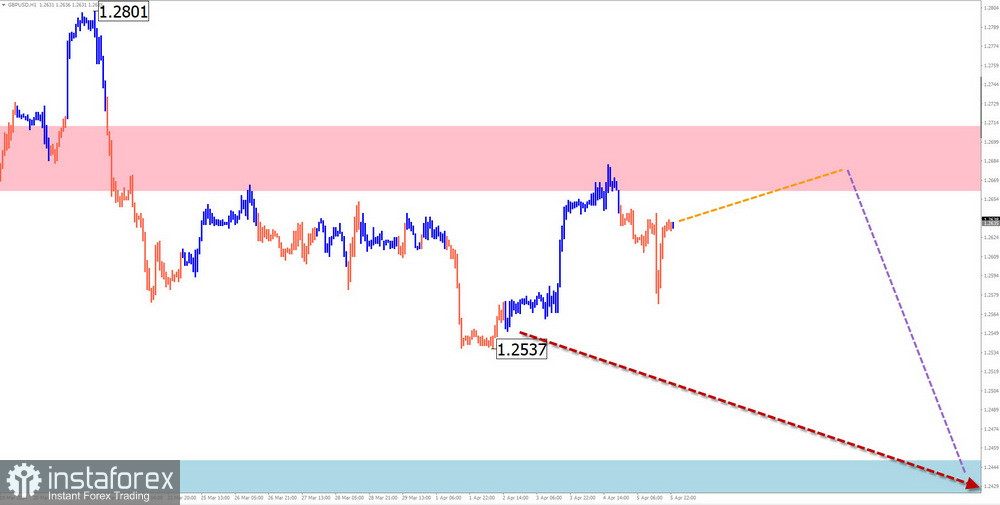
Potential Reversal Zones
Resistance:
- 1.2670/1.2720
Support:
- 1.2450/1.2400
Recommendations:
Selling: Conditions for such transactions in the pair's market will not be present in the coming week.
Buying: This will become relevant after the appearance of confirmed reversal signals in the support zone.
AUD/USD
Analysis:
Since December last year, the Australian dollar in its pair against the US dollar has continued to form a bearish wave. It is nearing completion of the middle part (B). For the past two months, the price has been in a narrow price channel between zones in opposite directions. At the time of analysis, quotes are at the upper boundary of the price channel.
Forecast:
In the upcoming week, a continuation of the sideways movement of price fluctuations from the previous week can be expected, but with the opposite vector. After possible pressure on the resistance zone, a reversal and a decrease in price to the support zone boundaries can be expected.
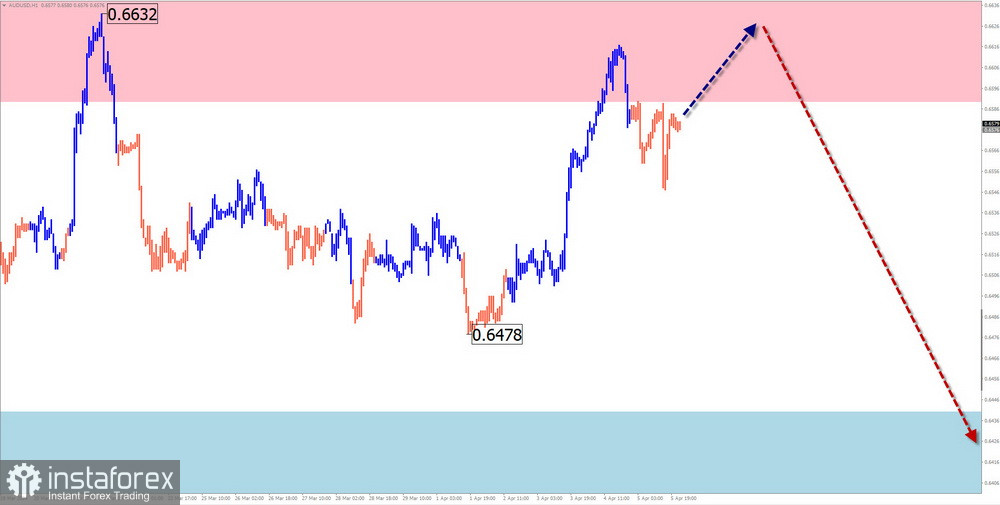
Potential Reversal Zones
Resistance:
- 0.6590/0.6640
Support:
- 0.6440/0.6390
Recommendations:
Buying: Are quite risky and can lead to losses.
Selling: This will be possible with reduced volume sizes after confirmed reversal signals appear in the resistance zone.
USD/CHF
Analysis:
On the daily chart of the US dollar against the Swiss franc, an ascending wave has been forming since the end of December last year. The price broke through the upper boundary of a strong reversal zone. For the continuation of the uptrend, quotes need to consolidate at the achieved level. Immediate upward movement signals are not observed on the chart.
Forecast:
In the next couple of days, a continuation of the horizontal drift of the pair's price within the calculated support boundaries is expected. Then, conditions for a change in direction can be anticipated. The resumption of the upward price movement may occur closer to the weekend. With a change in course, a sharp increase in volatility and a short-term breach of the lower boundary of the support zone cannot be ruled out.
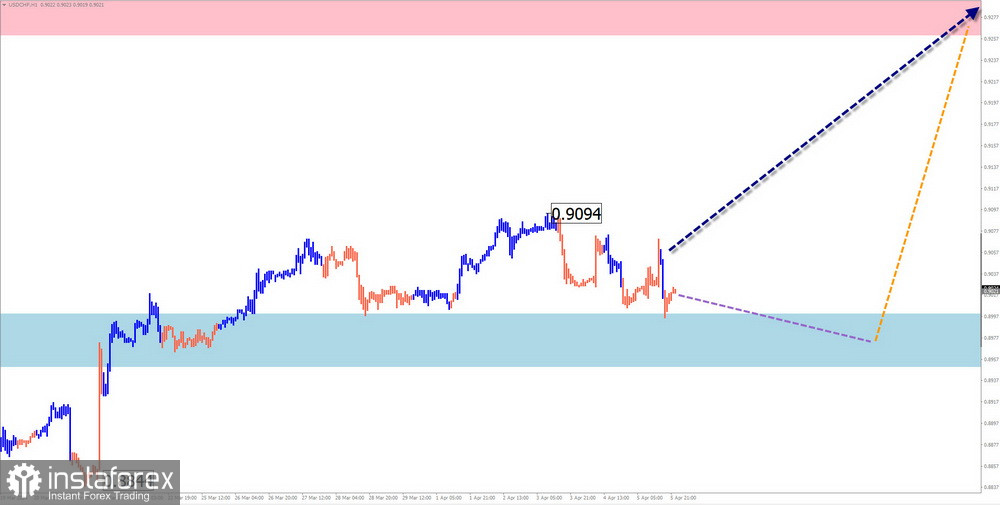
Potential Reversal Zones
Resistance:
- 0.9260/0.9310
Support:
- 0.9000/0.8950
Recommendations:
Selling: Conditions for such transactions are not present.
Buying: This will be possible after the appearance of confirmed reversal signals in the support zone on your trading system.
EUR/JPY
Analysis:
The daily chart of the euro/Japanese yen pair continues to demonstrate the continuation of the global uptrend. The price has reached the boundary of a strong potential reversal zone in the larger timeframe. The unfinished section of the main course started on December 7th. For the past two weeks, the price has been forming an intermediate correction, which has not been completed yet.
Forecast:
In the next couple of days, a flat character of price fluctuations with an upward vector can be expected for the pair. In the second half of the week, a reversal and a resumption of the downward price movement can be expected down to the boundaries of the calculated support.
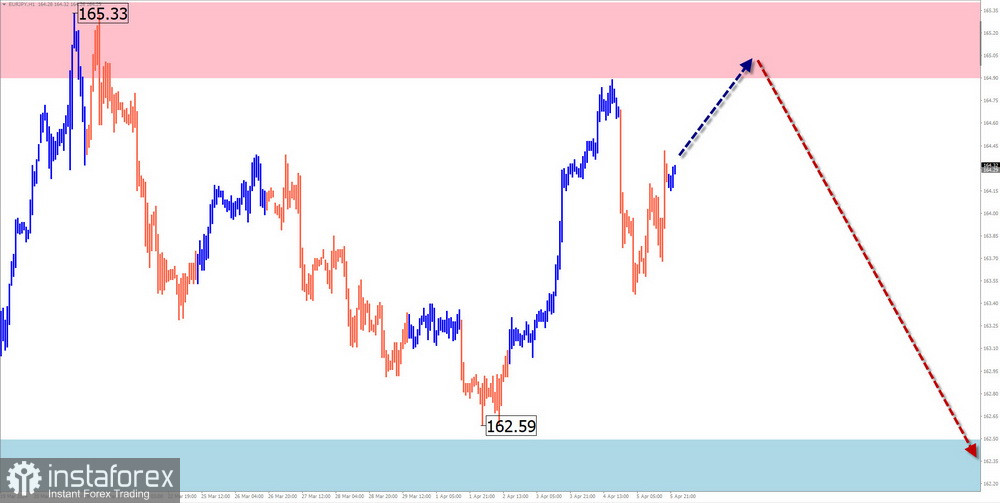
Potential Reversal Zones
Resistance:
- 164.90/165.40
Support:
- 162.50/162.00
Recommendations:
Buying: Have low potential and can be risky.
Selling: This can be considered for trading deals after the formation of confirmed reversal signals in the resistance zone.
EUR/GBP
Analysis:
The direction of price fluctuations in the euro/British pound pair is determined by a descending wave algorithm since February last year. For the past six months, it has been in a sideways drift, forming a corrective plane. At the time of analysis, the structure of this wave does not show completeness. The last section of the main course started on December 28th.
Forecast:
The upcoming week will not bring fundamental changes in the nature of price fluctuations in the cross. After possible pressure on the support zone, a change in direction and the beginning of an upward price movement can be expected, with the potential to rise to the upper boundary of the established price channel.
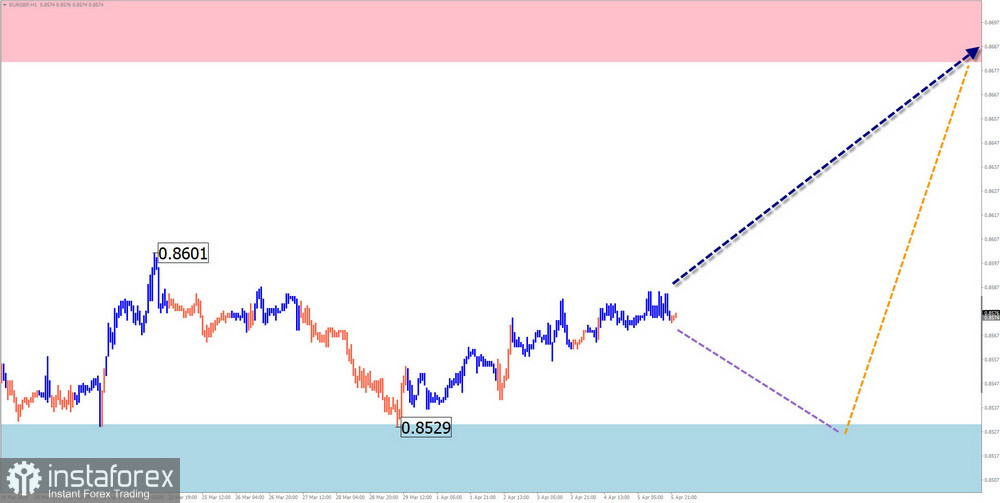
Potential Reversal Zones
Resistance:
- 0.8680/0.8730
Support:
- 0.8530/0.8480
Recommendations:
Selling: Such transactions have low potential.
Buying: Will become relevant after the appearance of confirmed reversal signals in the support zone.
US dollar index
Brief Analysis:
On the US Dollar Index chart since the end of December last year, the short-term trend direction is determined by an ascending wave. The structure of the wave forms the final part (C). From the lower boundary of the strong resistance zone last week, quotes are retracing downward, forming an intermediate correction.
Weekly Forecast:
The upcoming week is expected to continue the general sideways movement of the dollar. After contacting the support zone, a change in direction and a resumption of the price increase can be expected. The boundaries of weekly volatility demonstrate calculated zones in opposite directions.
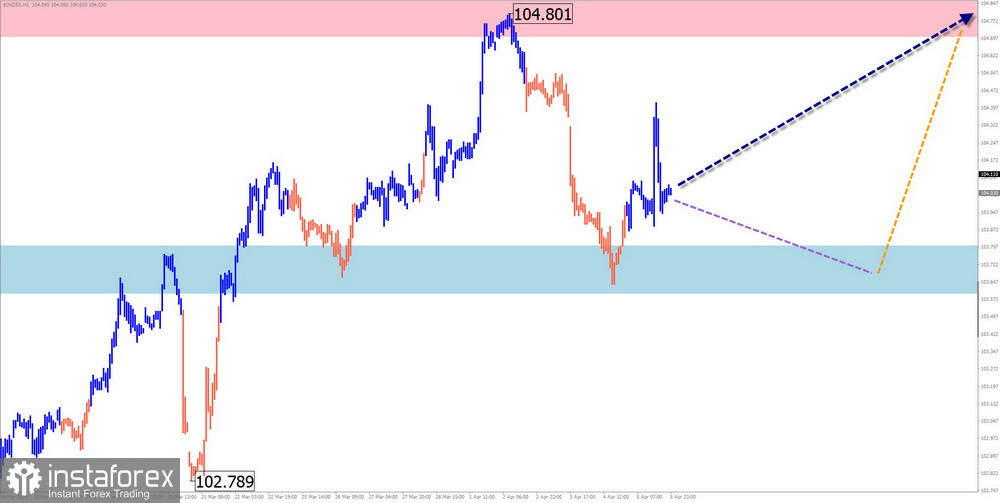
Potential Reversal Zones
Resistance:
- 104.70/105.20
Support:
- 103.80/103.30
Recommendations:
Strong fluctuations in the US dollar exchange rate are not expected in the coming days. Short-term transactions to weaken the exchange rate of national currencies in major pairs may be relevant after the appearance of reversal signals in the support zone.
Explanation: In simplified wave analysis (SWA), all waves consist of 3 parts (A, B, and C). The last unfinished wave is analyzed at each TF. Dashed lines indicate expected movements.
Note: The wave algorithm does not take into account the duration of instrument movements over time!
 English
English 
 Русский
Русский Bahasa Indonesia
Bahasa Indonesia Bahasa Malay
Bahasa Malay ไทย
ไทย Español
Español Deutsch
Deutsch Български
Български Français
Français Tiếng Việt
Tiếng Việt 中文
中文 বাংলা
বাংলা हिन्दी
हिन्दी Čeština
Čeština Українська
Українська Română
Română

